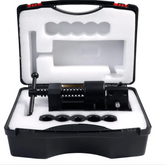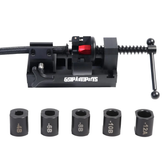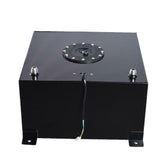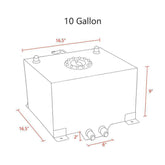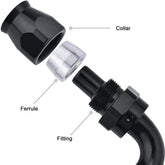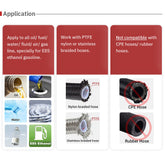Judging the Wear Degree of Brake Pads
The brake pads are an important component of your vehicle's braking system. As you use your brakes over time, the pads will gradually wear down. Being able to judge when your brake pads need to be replaced is important for maintaining safe braking performance. Here are some ways to check the wear degree of your brake pads:
Visual Inspection - Pop your hood and look at the brake pads directly. The pads are located in the brake caliper, on both sides of the rotor. Compare the thickness of the pads to a new pad. New pads will be 10-12mm thick on most vehicles. If the pad material is getting low (under 3mm), then they are heavily worn and need replacement. Also look for uneven wear patterns on the pad surface.
Listen for Squealing - As brake pads wear down, they will start to squeal loudly when you brake. This is caused by the brake pad indicator grinding on the rotor once the pad material gets very low. Squealing is a telltale sign that the pads need to be replaced immediately.
Check Wear Indicators - Many brake pads have built-in wear indicators that will make a scraping or squealing noise when the pad material is nearly gone. This varies by vehicle model - check your owner's manual to see if your brake pads have wear indicators.
Note Braking Performance Changes - As pads wear down, you may notice changes in braking performance. This includes increased stopping distances, brakes feeling "soft" or spongy, uneven braking, or pulling to one side. These are signs that the pads have significant wear and replacement is needed.
Measure Pad Thickness - Use calipers to precisely measure the thickness of the brake pad material (not the backing plate). Compare to new pad thickness specifications. Most pads should be replaced when thickness is 3mm or less.
Have a Mechanic Inspect - A qualified technician can visually inspect your brake pads during routine maintenance or inspections. They can accurately gauge the wear degree and determine if replacement is needed.
By regularly checking your brake pads using these methods, you can determine when replacement is necessary before they wear down completely. Driving on worn pads is unsafe and can damage rotors.
Replacing Brake Pads
Once you've determined your brake pads need to be replaced, you can either DIY or have a professional mechanic do it. Here are the steps for replacing brake pads yourself:
Supplies Needed:
New replacement brake pads for your vehicle
Brake pad grease/lubricant
Jack and jack stands
Wheel chocks
Torque wrench
Brake pad spreader tool
Bungee cords
Gloves, eye protection
Park your vehicle on a flat, level surface and engage the parking brake. Chock the rear wheels if working on the front brakes.
Loosen the wheel lug nuts slightly before jacking up the vehicle. Use a jack and jack stands to lift the vehicle and support it securely.
Remove the wheel to access the brake caliper and pads. Use bungee cords to support the caliper out of the way.
Locate the pad wear indicators on the inner and outer brake pads. Carefully pry these up with a flathead screwdriver to release the pads.
Use a brake pad spreader tool to push the caliper piston back into its cylinder to allow installation of the new thicker pads.
Remove the old inner and outer brake pads and pad hardware like shims, paying attention to their original positions. Use a wire brush to clean the pad abutment areas on the caliper.
Install the new inner and outer brake pads in the same locations along with any pad hardware. Use brake pad grease on contact points to prevent squeaking.
Press the caliper piston in and secure the caliper back into place over the new pads. Install the wheel and hand tighten lug nuts.
Slowly lower the vehicle and torque the lug nuts to specification with a torque wrench.
Pump the brake pedal several times to reset the caliper piston before driving. Test braking performance before regular use.
Be sure to properly dispose of old brake pads. Also inspect rotors and brake fluid condition when changing pads. Take your vehicle to a professional mechanic if you are unsure of any steps in the process. Proper brake pad replacement is crucial for safe driving.

